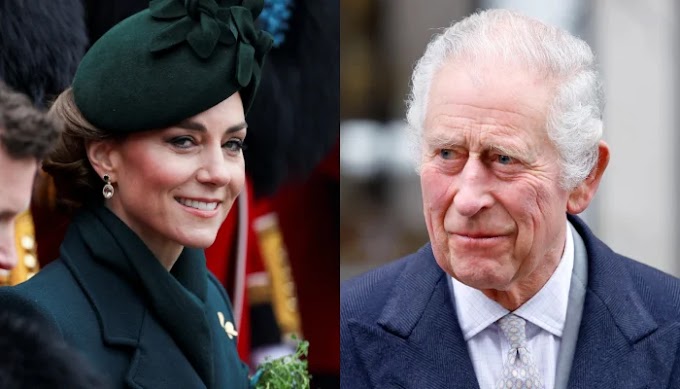If you have a credit card and an internet connection, I recommend that you fork over the $6 and rent Destination Wedding this weekend. The no-frills/no fuss romantic comedy, about two unhappy strangers who bump into each other on the way to a wedding and proceed to fall in lust, is driven entirely by its two lead actors. The script penned by director Victor Levin is punchy enough, and the two leading actors happen to be Keanu Reeves and Winona Ryder. As such, it’s worth that rental fee.

And yes, it’s an all-too-rare starring vehicle for Ms. Winona Ryder.
If you’re around my age, there is a decent chance that Winona Ryder was a
kind of generational icon. Whether you wanted to be her or wanted to be with
her (no matter your sexual preference), the star of Heathers, Beetlejuice
and Reality Bites represents her era like few others. That’s especially true
if you were someone who considered themselves a little different from the
rest.
Her career has been used as a defining example of the
double-standard of how men and women are treated in Hollywood. The common
refrain is something to the effect of “X actor did something awful and got
to come back while Winona Ryder’s career ended because she got caught
shoplifting.” However, I would argue that the truth is much simpler and
crueler. After her arrest and subsequent hiatus, she returned to a Hollywood
too old to play the love interest and unable to headline the kind of movies
that Hollywood had mostly stopped making.
Yes, the mainstream
leading roles stopped pretty quickly after Ryder was caught shoplifting in
December 2001. She had already completed work as Adam Sandler’s love
interest in Mr. Deeds (released in June 2002) and a supporting role as a
starlet who gets replaced by a computer-simulated actress in Andrew Nicols’
Simone (released in August 2002). Ryder took an allegedly self-imposed
three-year break from acting. She has since worked pretty consistently in
indie flicks, TV movies and at least one high-profile TV show, and with
small roles in periodic biggies like Black Swan.
Alas, she never approached the level of fame, fortune and glory
of her late-1980s-to-early-2000s peak. While Woody Allen spoke of being
unable to get her and Robert Downey Jr. insured for Melinda and Melinda
(which eventually starred Will Ferrell and Radha Mitchell), the media frenzy
over her “cry for help” incident may not have been the defining act in her
slump. Looking at the timeline before and after, Ryder’s career trajectory
away from Hollywood was as much due to the overall industry as it existed as
any knowing blowback from the incident.
By the time Ryder
returned, she had “aged out” as a potential love interest. She turned 35 in
2006. Even Anne Hathaway admitted three years ago to losing out on parts (at
32) to “new” 24-year-old starlets. Jennifer Lawrence has made a career out
of playing characters who are supposed to be a bit older than her current
28-year-old self. When the 25-year-old (or younger) actress gets cast as a
love interest to the 45-year-old actor (or as a muse to the 73-year- old
dude), 35 is near the expiration date.
If I may offer an example, let’s look at Johnny Depp. In 1990,
the 27-year-old Depp was cast in Tim Burton’s Edward Scissorhands. His love
interest was a teenage girl played by then-19-year-old Winona Ryder. But cut
to nine years later, and Tim Burton’s Sleepy Hollow cast 37-year-old Depp as
the heroic detective and then-19-year-old Christina Ricci as his love
interest. It’s no secret that leading men can get older while their love
interests tend to stay the same age. Depp was 48 when then-24-year-old Bella
Heathcoate played his Dark Shadows love interest.
Ryder was 30 in
2002 when she starred alongside then-35-year-old Adam Sandler in Sony's Mr.
Deeds. But four years later, a 39-year-old Sandler would star in Click
alongside a 28-year-old Kate Beckinsale. If Ryder had aged out of love
interest roles in major studio flicks, to the point that she was old enough
(at 37 in mid-2009) to play Spock’s mom in Paramount/Viacom Inc.'s Star
Trek, well, you can see why her credits in would-be “big” movies dwindled
after her hiatus. Who is to say it wouldn’t have been the same even absent
her criminal transgression?
That would be less of a problem if Hollywood made starring
vehicles for actresses even somewhat on par with the number offered to
actors. But that is not remotely true today, and it was even less accurate
in the mid-2000s. By the time Ryder came back, Hollywood had stopped making
or releasing movies like How to Make an American Quilt, Reality Bites and
Girl Interrupted. It’s a problem that crushed an entire generation of (to be
fair, mostly white) actresses and was part of what led a whole generation to
flock to television for meaty roles.
Hollywood caught tent-pole
fever, with dreams of four-quadrant fantasy blockbusters and IP-driven
franchises, usually with a young white guy (or anolder white guy who could
still pretend he was young) becoming “the special.” As such, almost
everything else (real-world thrillers, erotic dramas, romantic comedies,
essentially anything PG- or R-rated) got tossed aside as global box office
became paramount and the decline in DVD sales hurt the crucial
post-theatrical revenue stream that justified risk-taking and comparatively
diverse movie slates. The kinds of films that could give acclaimed actresses
a robust career as a leading lady barely existed.
The industry has slightly swung back in the other direction,
again offering at least some romantic comedies (Trainwreck), thrillers (Miss
Sloane) and related sci-fi/genre flicks (Annihilation) with female leads.
But these projects go to the starlets or prestige actresses of today
(Jessica Chastain, Emma Stone, etc.), not the ones of yesteryear. Women
don’t get to age into grizzled character actors because Hollywood flicks are
mostly “a bunch of dudes and a babe.” The star vehicles go to the top-tier
actresses of the moment, with everyone else fighting for scraps. If you’re
not Amy Adams, you’re Isla Fisher.
Despite the systematic
inequities, Ryder never truly vanished, at least not after she “came back”
in 2006. She made at least one movie every year between 2006 and 2013. She
made three films in 2009 (go rent The Private Lives of Pippa Lee) and was
superb in Jason Statham’s terrifically cast (and Sylvester Stallone-penned)
Homefront, which came and went in late 2013. And then Netflix’s Stranger
Things put her back in the spotlight in the summer of 2016, which brings us
to today. Destination Wedding is, by default, her first theatrical starring
vehicle since Lost Souls in late 2000.
None of this is to negate the absurd tabloid feeding frenzy
that took place after her arrest in late 2001. And this is not to say that
Ryder’s scandal didn’t play some role in squashing her career as a
sought-after leading lady. But the reason it affected her in a way that it
would not have affected, say, Ethan Hawke, Ben Stiller, Johnny Depp or Keanu
Reeves is due to the same gender-driven inequalities that would have
threatened her career (especially considering that most of her vehicles were
not huge hits) even absent any inciting incident.
I am hopeful
that the same kind of generational coronation that greeted Reeves on the
release of John Wick can also rub off on his periodic costar. She is 46 and
(for what it’s worth) has aged about as well as the 54-year-old Reeves.
Ryder is still as good an actress as she was in the mid-1990s (see also: her
terrific supporting turn in the 2015 HBO miniseries Show Me A Hero). She’d
still add her own unique color to any star-studded franchise ensemble or
quirky character piece. Turning Destination Wedding into a VOD smash won't
hurt.
But as for why Ryder fell out of Hollywood’s favor, the reason
was more straightforward than the blowback from her publicized brush with
the law. Hollywood stopped making the kinds of films that an actress like
Ryder would star in, and she grew out of the age range for playing the
female lead/love interest. And by the time Hollywood came to its senses,
there was a new generation of actresses to tap for these star vehicles and
Oscar-bait releases. Why did Winona Ryder get cast out in the mid-2000s? She
became a woman closer to 40 than 30.











